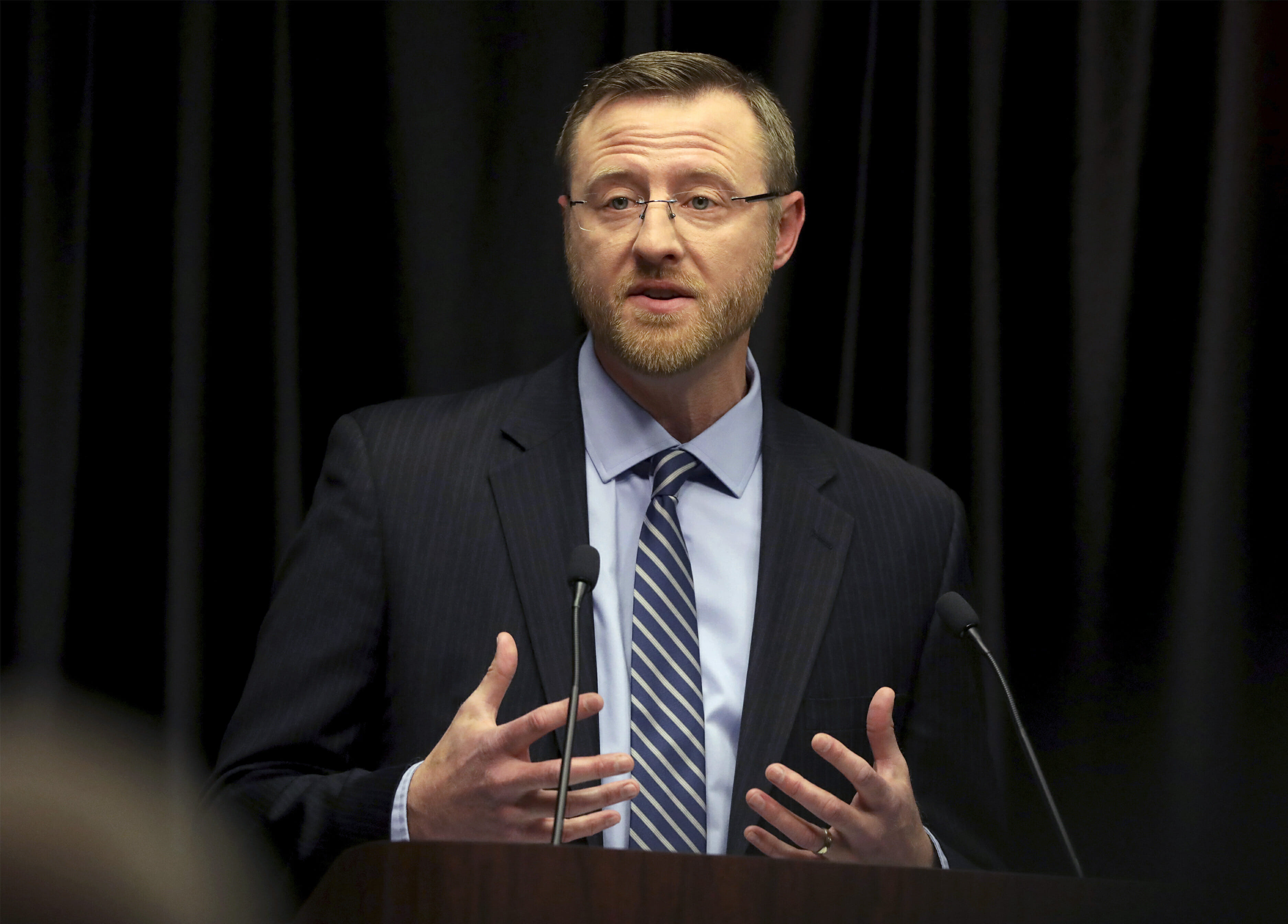
Liberal's concession in Wisconsin race boosts GOP confidence
MADISON, Wis. (AP) — The liberal candidate’s concession Wednesday in Wisconsin’s Supreme Court race gave Republicans a boost of confidence following a string of losses heading into the 2020 presidential campaign.
The closely watched court race was an early measure of the mood in the battleground state, although its predictive value is limited. Past Supreme Court contests have not always been accurate previews of what will happen in fall elections with larger turnout.
At the very least, the narrow victory by conservative candidate Brian Hagedorn over his liberal opponent Lisa Neubauer showed once again that the margin for either side in Wisconsin is razor-thin. Neubauer conceded to Hagedorn eight days after the election, with his lead at about half a percentage point.
Hagedorn won by about 6,000 votes. County canvassing of the vote was ongoing, but Neubauer conceded after the majority of counties were done and the totals moved less than 200 votes.
The Supreme Court race is just the latest in a series of tight elections in Wisconsin, reinforcing its status as a battleground state heading into 2020 and part of a “blue wall” including Michigan and Pennsylvania that Democrats are trying to build to beat President Donald Trump.
Other than Barack Obama’s two wins, the past three presidential elections in Wisconsin have been decided by just a few thousand votes. Trump carried Wisconsin by less than 1 percentage point, or about 23,000 votes, in 2016. In 2000 and 2004, the Democratic nominees won by about 5,700 votes and 11,000 votes.
In 2018, Republican Gov. Scott Walker lost by just over 1 point to Democrat Tony Evers. The Democratic attorney general candidate, Josh Kaul, also won by less than a point.
While Republicans were excited by Hagedorn’s win, past Supreme Court races haven’t always been accurate indicators of future elections.
Last year, the liberal Supreme Court candidate cruised to victory in April, foreshadowing more narrow Democratic victories in the midterm elections. However, in 2007 and 2008 conservative candidates won Supreme Court races, victories that came in between huge Democratic wins in the fall of 2006 and the 2008 presidential election.
Hagedorn’s win seems to fit that model, coming after Republicans lost every statewide race in 2018.
Turnout is another factor that limits the predictive quality of Wisconsin Supreme Court races.
Nearly 27 percent turned out to vote last week, which is above the average of around 20 percent for most spring elections. Still, that’s less than half of what turnout has historically been for presidential elections. It was 66 percent in 2016 and that was the lowest turnout for a presidential election in 20 years.
Democrats and Republicans poured money into the officially nonpartisan race, with television ads at the end comparing the attacks against the conservative candidate to what was lodged against U.S. Supreme Court Justice Brett Kavanaugh.
Neubauer attributed her defeat to more than $1.2 million in outside money that came into the race from Republicans to attack her. She also benefited from more than $1 million in outside spending, including about $350,000 from a group run by former Democratic U.S. Attorney General Eric Holder.
“I hope future races see less influence from outside special interests,” Neubauer said. “(Hagedorn) said that he was running to get partisan influences out of our courts, and I hope he lives up to his promise.”
Hagedorn, in a message to supporters Wednesday, said he “meant every word” when he said during the campaign that partisan politics has no place in the Supreme Court. He also thanked supporters for their hard work and prayers.
“Together, we made history,” Hagedorn said.
In a nod to the national significance of the race, Trump tweeted congratulations to Hagedorn, calling it a “big surprise win” in a “very important Supreme Court seat.”
Hagedorn’s victory increases the conservative majority on Wisconsin’s Supreme Court to 5-2. A liberal win would have given them a chance to take the majority next year. Now conservatives will have it until at least 2023.
___
Follow Scott Bauer on Twitter: https://twitter.com/sbauerAP
The Western Journal has not reviewed this Associated Press story prior to publication. Therefore, it may contain editorial bias or may in some other way not meet our normal editorial standards. It is provided to our readers as a service from The Western Journal.
Truth and Accuracy
We are committed to truth and accuracy in all of our journalism. Read our editorial standards.
Advertise with The Western Journal and reach millions of highly engaged readers, while supporting our work. Advertise Today.












